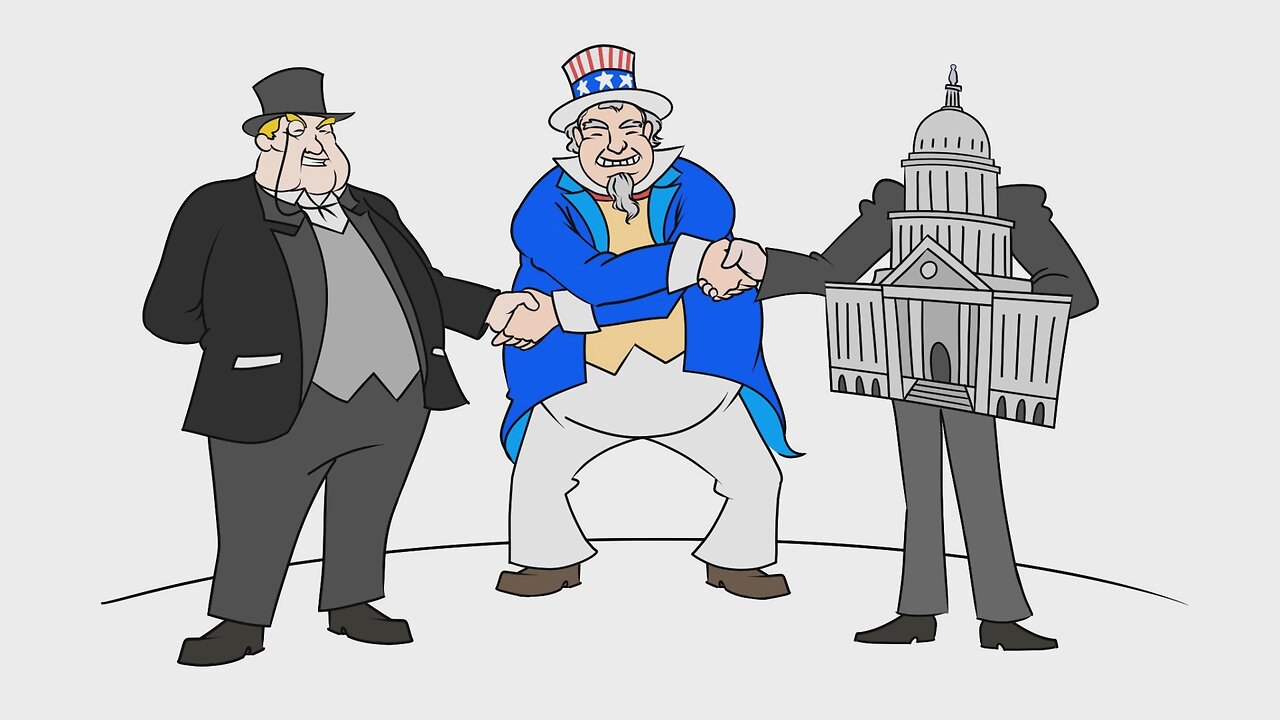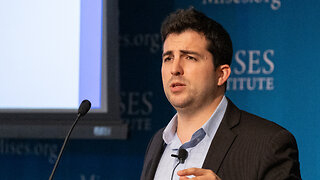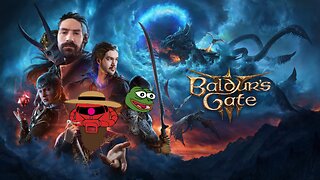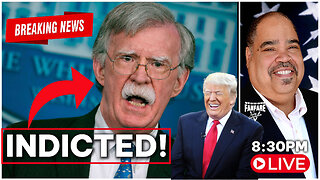Premium Only Content

The Military-Industrial Complex
Shortly after becoming president, Dwight Eisenhower claimed that “every gun made, every warship launched, every rocket fired, signifies theft from those who hunger and are not fed, are cold and not clothed.”
Eight years later, Eisenhower warned Americans to “guard against the acquisition of unwarranted influence by the military-industrial complex,” which he defined as the “conjunction of an immense military establishment and a large arms industry.”
In the 1930s, Smedley Butler explained how the military subsidized private companies, but it wasn’t until the Second World War, Eisenhower noted, that America developed “a permanent armaments industry of vast proportions.”
So how did this come about?
After Germany invaded Poland, President Franklin Roosevelt convinced Congress to approve his cash-and-carry program to sell arms to France and Britain. The following year, he replaced cash and carry with Lend-Lease, which “loaned” weapons to cash-strapped allies. Lend-Lease established the precedent of American subsidization of foreign armies.
Upon joining the war in 1941, the US government urged patriots to enlist in the “battle for production.” Propaganda reminded Americans that “production wins wars,” and heroic images of factory workers likened weapons manufacturing to military service.
FDR’s wartime policies mirrored his earlier New Deal, based on the ideas of economist John Maynard Keynes. During recessions, Keynes believed, governments should stimulate demand by printing money to spend on public works. FDR applied this formula to his New Deal programs, but after nine years, the economy remained in shambles.
The war allowed FDR to shift to what’s known as military Keynesianism. Because inflationary military spending artificially boosts GDP (gross domestic product) and military enlistment reduces unemployment, military Keynesianism produced the wartime prosperity myth. Many people believe the war ended the Great Depression, despite the country’s facing shortages of basic goods, such as sugar and butter.
Eisenhower understood the problem. “The cost of one modern heavy bomber,” he said, could pay for thirty schools, two power plants, two hospitals, fifty miles of highway, or half a million bushels of wheat. But the arms industry had become a fixture of the American economy. In an early draft of his farewell address, Eisenhower described this as the “military-industrial-congressional complex.”
Political scientists call this the iron triangle of connected interests. Congress passes legislation to benefit an interest group—military contractors—in return for political support. The interest group lobbies Congress on behalf of a bureaucracy—the military establishment—in exchange for special treatment. And the bureaucracy received significant increases in its own funding to administer federal policy. This dynamic has resulted in annual military expenditures of $800 billion—that’s more than the next nine largest military budgets combined.
The military-industrial complex made America the de facto arms dealer for the world, and the US military presence grew to having seven hundred military bases across eighty countries. The military-industrial complex also allowed America to fight a new kind of war by funneling weapons to foreign soldiers to fight what are known as proxy wars.
______________________________________
Want to learn more?
For more animated content, check out Economics for Beginners at https://BeginEconomics.org.
Check out the latest Mises Wire articles on foreign policy and war: https://mises.org/topics/war-and-foreign-policy
Anatomy of the State by Murray Rothbard is a great mini-book on the true nature of the state: https://mises.org/anatomy
The Betrayal of the American Right by Murray Rothbard focuses on the history of the modern conservative movement, and the role it played in aggressively escalating America's foreign policy in the 20th century: https://mises.org/betrayal
Wall Street, Banks, and American Foreign Policy by Murray Rothbard is a fiery monograph that employs "power elite" analysis to understand the relationship between money, power, and war: https://mises.org/library/wall-street-banks-and-american-foreign-policy-0
A Century of War: Lincoln, Wilson and Roosevelt by John V. Denson is an extensive look at how the twentieth century became the bloodiest in all history: https://mises.org/library/century-war-lincoln-wilson-and-roosevelt-0
A Foreign Policy of Freedom by Ron Paul offers a positive view for an American foreign policy would look like if it stayed true to its founding principles: https://mises.org/library/foreign-policy-freedom
-
 44:04
44:04
Mises Institute
2 months ago $0.01 earnedTariffs versus Free Trade | Patrick Newman
1402 -
 39:25
39:25
Donald Trump Jr.
6 hours agoFBI's Incredible Crime Crackdown, Plus my Message to ABC!! | TRIGGERED Ep.283
134K109 -
 2:53:38
2:53:38
BigTallRedneck
5 hours agoPGA 2K25 - REDNECK'S WAY OR THE HIGHWAY
7.35K -
 2:43:58
2:43:58
megimu32
4 hours agoON THE SUBJECT: MTV | From 24/7 Music to… Silence?
5.47K5 -
 4:38:09
4:38:09
Reolock
5 hours agoWoW Classic Hardcore | More Ultra? Maybe Mage?
3.28K -
 1:02:05
1:02:05
BonginoReport
7 hours agoMusic Stars Go Viral For Anti-ICE Rants - Nightly Scroll w/ Hayley Caronia (Ep.157)
72.3K42 -
 3:57:04
3:57:04
Amish Zaku
6 hours agoBaldur's Gate 3 - Four Player Co-op Act 3
1.81K -
 LIVE
LIVE
Barry Cunningham
5 hours agoKINDA BREAKING NEWS! JOHN BOLTON HAS BEEN INDICTED! WHO'S NEXT!
3,873 watching -
 LIVE
LIVE
a12cat34dog
4 hours agoTRIPPIN' INTO THE UNKNOWN :: The Evil Within 2 :: SPOOKTOBER CONTINUES {18+}
120 watching -
 4:37:04
4:37:04
OhHiMark1776
7 hours ago🟠 10-16-25 ||||| Act 3 Continue ||||| Baldur's Gate 3 (2023)
22.5K2